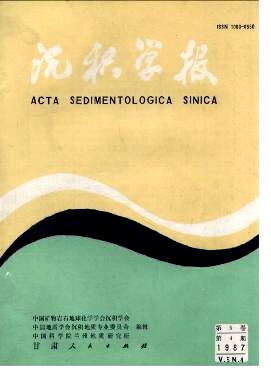ACTION OF SPORE POLLEN TO THE SEDMIENTARY STUDY ON RADIATING SANDY RIDGES ALONG THE COAST OF NORTHERN JIANGSU PROVINCE
- Received Date: 1985-04-20
- Publish Date: 1987-12-10
Abstract: In recent years, the marine palynology has been used to study the movement and distribution of marine sediments. Spore-pollen as a part of the marine sediments moves with mud and sand, and it has a unique form owing to originating from plants, so it can offer more and clear information on sedimentary environments. Based on the study of the spore-pollen assemblage of surface samples from the radial sandy ridges along the coast of Northern Jiangsu Province during 1980-1981, the author found that the spore-pollen was a good index to reflect the hydrodynamics, material origin and the material distribution of the sandy ridge groups. Meanwhile, it was the medium to study the relationship between marine sediments and the dynamics of sea water. So the study on the recent developing process of the radial sandy ridges could be promoted by using the spore-pollen analysis. The radial sandy ridges of the shore of Northern Jiangsu Province are distributed between the estuary of the Changjiang River(Yangtze) and that of the old Huanghe River(Yellow River). These two rivers influenced the spore-pollen assemblage of this area and its variation. The spore-pollen assemblage in the estuary of the Changjiang River is a Pinus-Pteridium-Polypodiaceae-Quercus assemblage, while in the estuary of the old Huanghe River is a Pinus-Pteridium-Artemisia-Chenopodiaceae assemblage. The spore-pollen assemblage in the main body of the radial sandy ridges is a Pinus-Compostae-Pteridium-Artemisia assemblage. The spore-pollen analysis of the area shows that the spread range of the Changjiang dalta sediments, indicated by aquatic plants, pollens and algae, is at 122?0'E and at 32°20'N, but the pollens of aquatic plants and algae from the old Huanghe River are only distributed in the old Huanghe dalta. The distribution of Pinus-pollen is closely related to the dynamics of sea-water, the content of Pinus-pollen is lower in the region of turblent flow but higher in quiet waters. The concentration and the preservative state of spore-pollen are the important index to judge the type, distribution and age of sediments. The region with high concentration of spore-pollen is a fine-grained sediment region. The region with low concentration is generally a coarse fine sand region. The region where the spore-pollen is in fair preservation is the region with weaker dynamics and younger sediments, and the region where spore-pollen is in poor preservation is the region with stronger dynamics and older sediments. The main part of the radial sandy ridges could be formed during the late Pleistocene Wurm glaciation and reworked by recent tidal current.
| Citation: | Xu Jiasheng. ACTION OF SPORE POLLEN TO THE SEDMIENTARY STUDY ON RADIATING SANDY RIDGES ALONG THE COAST OF NORTHERN JIANGSU PROVINCE[J]. Acta Sedimentologica Sinica, 1987, 5(4): 147-158. |






 DownLoad:
DownLoad: